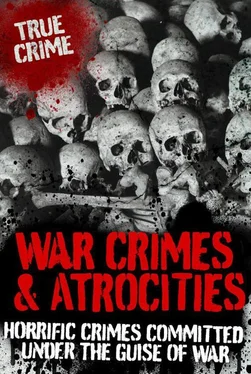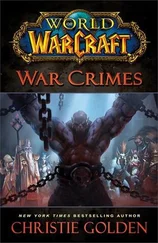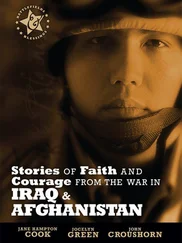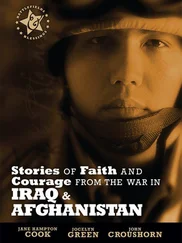CRIMES AGAINST HUMANITY
Under the reign of Leopold II, the Congo Free State became the subject of a terror regime that included a long list of atrocities, the vindictiveness of which are almost too much to believe. Leopold’s prime interest in the Congo was its natural resources, and he relied heavily on the indigenous labour. Natives were required to provide State officials with a set amount of rubber and ivory at a fixed government-set price, provide food to the local outposts, and also to provide at least ten per cent of their men as full-time labourers.
To make sure that the officials received their full quota of rubber, the Force Publique (FP) was formed. The FP was an army whose sole purpose was to terrorize the local natives. The officers were white agents of the State, while the soldiers were local black natives, many of whom were cannibals from the fiercest tribes in the Upper Congo. Many of them had been kidnapped as children from their own villages and raised by Catholoc missions, where they received harsh military training in appalling conditions.
The soldiers were armed with modern weapons and the chicotte , which was a bull whip made out of hippopotamus hide. This whip was frequently used as a means of punishing anyone who violated the State, and it quickly became a feared symbol of Leopold’s administration. It was quite usual for workers to literally be beaten to death with this whip, with 90 lashes being considered the normal punishment.
The Force Publique frequently took and tortured hostages, mainly women, who were flogged and raped. Whole villages were burnt without warning, and its people were rounded off. The men were sent off into the forests, while their women were tied up and used as helpless targets of abuse until their husbands returned with the required amount of rubber to satisfy the agents. Men who failed to bring enough rubber to the agents were killed, but perhaps the most atrocious activity of all was the mutilation, which became common practise. It was quite normal for the soldiers to take trophies of human hands or ears back to their white officers to prove that they had not been wasting their time. The severed hands became a sort of currency, and it is purported that the soldiers of the Force Publique were paid their bonuses on how many trophies they had collected.
One soldier described a raid to punish a village:
…ordered us to cut of the heads of the men and hang them on the village palisades, also their sexual members, and to hang the women and the children on the palisade in the form of a cross.
John Harris, a missionary who had travelled to the Congo, was so shocked by what he had encountered, that he felt compelled to write a letter to Leopold’s chief agent:
…I have just returned from a journey inland to the village of Insongo Mboyo. The abject misery and utter abandon is positively indescribable. I was so moved, your Excellency, by the people’s stories that I took the liberty of promising them that in future you will only kill them for the crimes they commit…
Some of the brave survivors of this period said they had managed to live through the massacre by pretending that they were dead. Unbelievably, they did not dare to move even when their hand was severed. They had to lay motionless until the soldiers left, at which time they could cry for help. Estimates of the death toll range from 5 million to 15 million and historians have compared the atrocities to actual genocide.
THE SECRET WAS OUT
Leopold managed to suppress the rumours of the atrocities for more than a decade, and in this period he managed to reap fantastic personal gains from the exploitation of the natives of the Congo. The horrors of what was happening remained a secret for so long because the country was difficult to visit. Even missionaries were only allowed there on sufferance, and mostly only if they were Belgian Catholics who Leopold had vowed to silence.
Eventually, the most damning evidence came from an unexpected source – the secret was out – but few were prepared to believe it. Edmund Dene Morel, a clerk for a major shipping office based in Liverpool, became curious when ships carrying large loads of rubber from the Congo returned to the country full of guns and ammunition for the Force Publique . In an effort to gain more information, Morel left his job and became a full-time journalist.
With the support of merchants who wanted to break Leopold’s monopoly, and the financial support of the chocolate millionaire, William Cadbury, Morel started to publish details of the atrocities. In 1902, Joseph Conrad’s novel Heart of Darkness was published, which was based on his own experiences as a steamer captain on the Congo River a few years before. The book confirmed the public’s suspicions of what was happening under Leopold’s reign of the Congo. The following year, Morel, with the support of the House of Commons, succeeded in passing a resolution that called for the British government to carry out a full-scale inquiry. In 1904, the British Consul, Roger Casement, delivered a long and detailed eye-witness account, which was made available to the public. Morel, with Casement’s support, founded the British Congo Reform Association, who immediately demanded action. The USA and other European nations quickly followed suit and the Belgian Parliament forced Leopold to set up an independent inquiry. Despite the king’s efforts to cover up, Casement’s earlier report was soon confirmed in all its incriminating detail.
Even though Leopold promised to implement reform to his regime, the public were unprepared to take his word seriously, and every nation was in agreement that his reign must be terminated as early as possible.
THE AFTERMATH
After much debate as to who would take over control of the Congo, finally on 15 November, 1908, four years after the Casement Report, the Belgian Parliament annexed the Congo Free State and took over its administration. A debt of around 250 million francs was transferred from Leopold to the Belgian government, who in turn offset the debt against the population of the Congo. Having been squeezed of every bit of its wealth for the past decade, the Congo now found itself shackled even further by this enormous debt.
The Congo continued to remain under Belgian rule and their recovery was incredibly slow. The State took over Leopold’s private colony, but the rubber boom was past its peak, and the natives relied on the influences of the missionaries to improve their way of life. In the 1950s, a more modern-thinking world started to urge for a free Congolese republic, which was created in the 1960s following an intense period of civil war.
Right up to the present day the country has been hampered by civil wars, and even now there is no stable government to improve the state of the Congo. It would be fair to say that much of the instability of the present country can be traced back to the atrocities of Leopold II.
1901

The Balangiga Massacre, which took place in a small seaside village on the island of Samar in the Philippines, personified the brutality of the Philippine– American War. The 9th Infantry Regiment of the US Army sailed into Balangiga on 11 August, 1901. The batallion consisted of 74 veterans, led by Captain Thomas Connell and was in response to the mayor’s request for protection from rebel forces. When they arrived in the town, the US soldiers took over the affairs of the town and forcibly took occupation of some the local’s huts. Although relations between the soldiers and the villagers were friendly when they first arrived, things started to deteriorate rapidly. The soldiers issued an order that all male residents from the age of 18 were to clean up the town in preparation for an official visit by their superior officers. While these men were busy, the soldiers allegedly abused one of their women, which led to retaliation by the villagers. On top of this, Captain Connell ordered the destruction of all food stores in the town for fear of it falling into the hands of the Filipino guerilla forces.
Читать дальше













